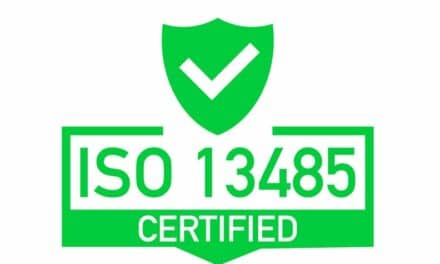As I write this article, the spring testing date for the CBET has been over now for 3 days. It seems it always falls on Kentucky Derby day because it is always the first Saturday in May. Therefore, if you are interested in becoming a CBET, there is no better time to make a plan to achieve your career goals. None of us plan to fail, but many of us fail to plan. If you do the latter, you are by far more likely to accomplish the first, so do not fail and make a plan for your success.
To begin preparing for your success, I would suggest you read two previous articles, which are located in the “ICC Prep” archives of 24×7 magazine’s Web site. All the “ICC Prep” articles have good information and need to be read before the exam, but two are great resources for beginning the study process. In the December 2009 issue, you will find an article titled, “The Basics of Passing the CBET Exam,” which covers basic study techniques. Too many people overlook the importance of these proven study habits, like dedicating a time and place for study and sticking with it.
The other article, “Study Tips to Ace the Test,” is in the February 2010 edition of 24×7. This article should give you some insight into different levels of cognition and what you should strive for in your studies.
Levels of Cognition

Anytime you are trying to learn, you should strive to achieve a level of evaluation or at least synthesis or analysis. To give a brief explanation of these levels of cognition, think about a blood gas analysis. The very first level in Bloom’s taxonomy is knowledge; this is no more than memorization. For a blood gas analysis, you should know, from memorization, that a blood gas looks for pH, PaCO2, and PaO2. However, to do well on the test you need more than just memorization—you need higher-order thinking skills.
Take acidosis, a condition of blood pH going down the pH scale, making it more acidic. This can be caused by an increase in CO2, which is caused by hyperventilation. This is why someone who is hyperventilating can breathe into a bag to correct the problem. When breathing into the bag, a person is rebreathing expelled air, which is higher in CO2, and in turn it brings the blood pH back up the scale toward the alkaline side of the scale.
This holistic view of what is happening in the blood and how it relates to the lungs is what you want to achieve in your study process. When you learn new facts, look for connections to what you already know and create a web of knowledge. This, in its essence, is gaining knowledge, and hopefully a better understanding of the entire process you are studying. In the above example, you should strive to memorize not the three basic tests a blood gas runs, but how the blood chemistry is affected by the functioning of the lungs. You should look for these types of connections in everything you study.
Another good example I covered in my previous article that addresses where holistic thinking could come in very handy for a CBET examinee could be pressure. We know from our basic science or physics course that pressure = force/area. This formula is at the level of “knowledge,” but if we begin our cognitive web about pressure, many other areas of the test may be revealed as we ascend up Bloom’s Taxonomy. When I think of pressure, I begin my web with pressure in a gas tank, atmospheric pressure, blood pressure, occlusion pressure, pressure ventilation, static pressure, hydrostatic positive and negative pressures, pump pressures, pressure transducers, positive pressure rooms, and negative pressure rooms. The list would surely grow the longer I thought about pressure. The benefit comes from taking one subject on “pressure” and seeing it in all the different ways it could be used in the health care environments. The more information I put in this web the tighter the information becomes, such as with gas pressure. I know there are four main gas pressure laws I must be concerned with in medical environments. Charles’, Henry’s, Boyles’, and Dalton’s laws of gas pressures are found in many areas of the hospital. These laws apply to mechanical ventilation, portable gas cylinders, what type of gas is used with an IABP, and again the list goes on and on. Knowing these laws affect pressure and the volume of gasses and solubility in a liquid, such as blood, can be very helpful in figuring out the correct answer on the exam.
Making the Connection
This type of knowledge will become more and more important as many of the questions are becoming more about hospital procedure issues or policy issues, which may be tied to the medical equipment. For example, the clinical/biomedical department gets a call concerning problems x, y, and z. Prioritizing which one you should respond to first is a judgment call until you know what x, y, and z are. Let us say x is a centrifuge, y is an NIBP, and z is a balloon pump. I hope you would have said you would take the balloon pump call first because this would be the most crucial. This is a very simplistic example, but you must prepare for this type of question that does not rely on just memorization.
This concludes this edition of “ICC Prep,” and as all students want, there is no test associated with this article. So make a plan and plan not to fail!
Best of luck in your quest for certification.
John Noblitt, MAEd, CBET, is the BMET program director at Caldwell Community College and Technical Institute, Hudson, NC. For more information, contact .





